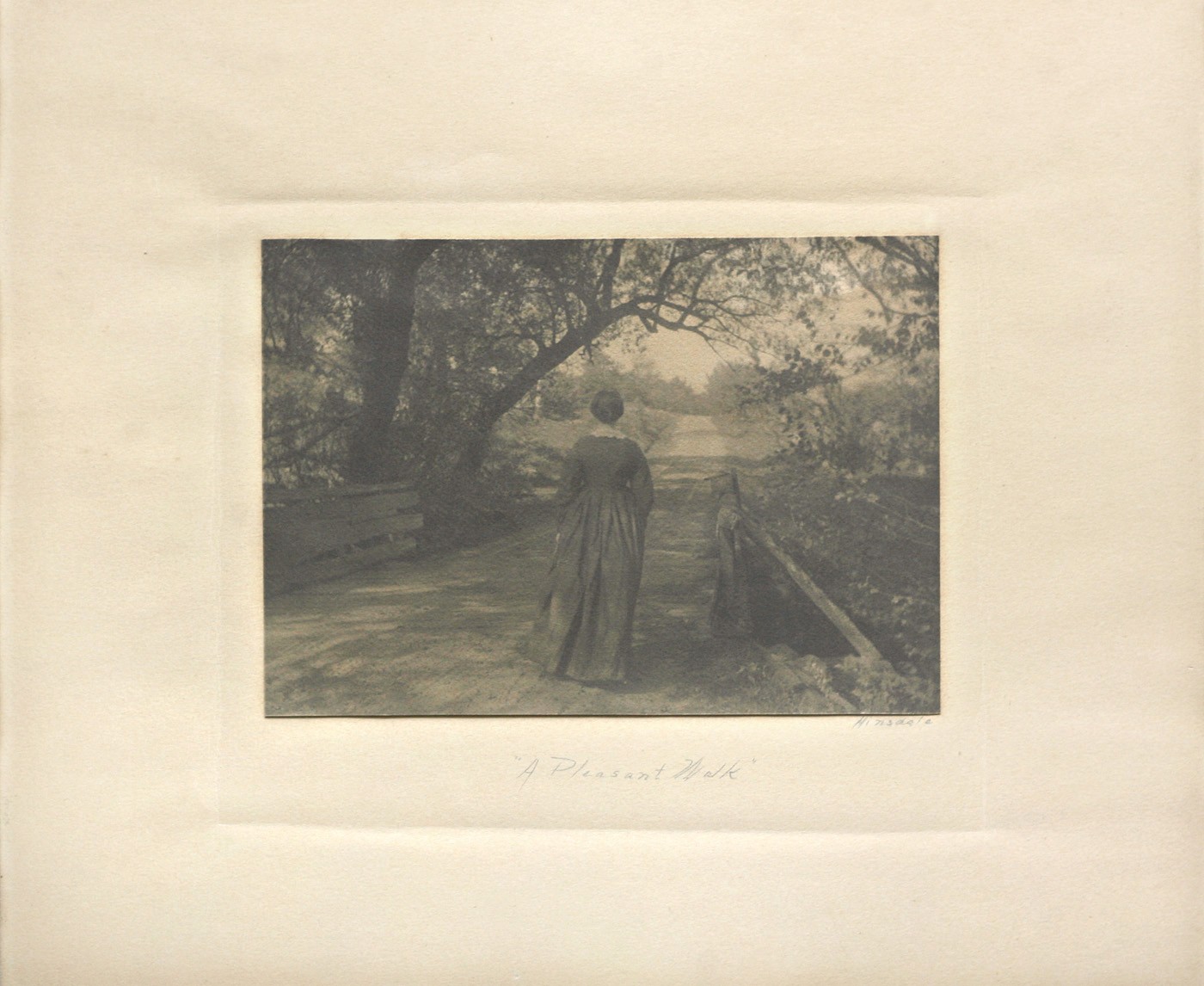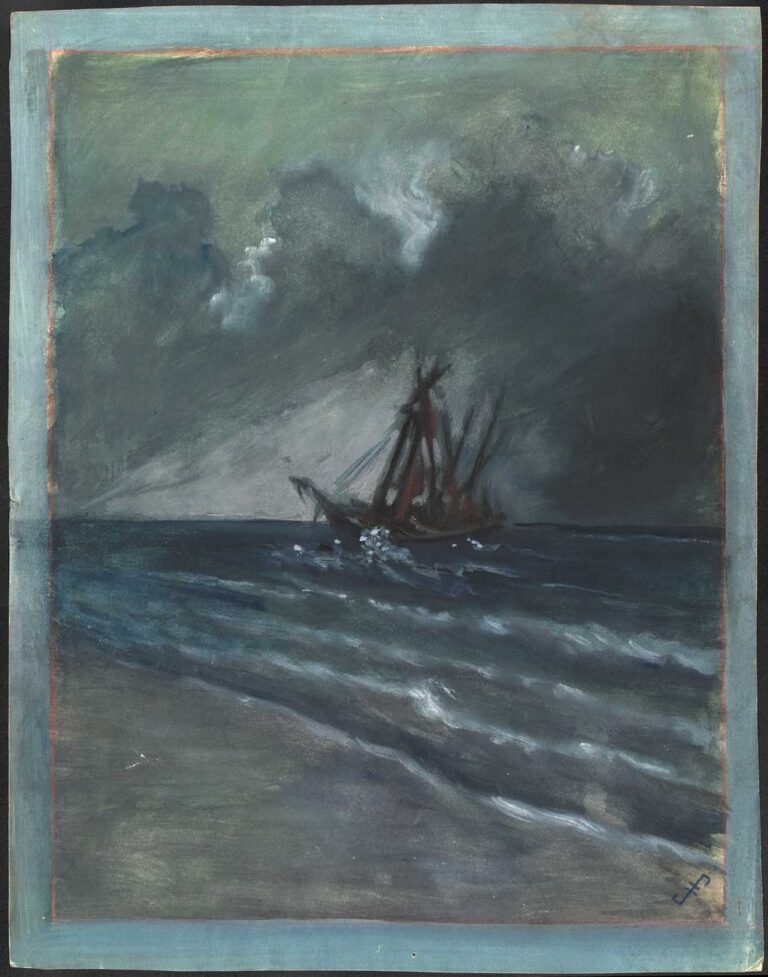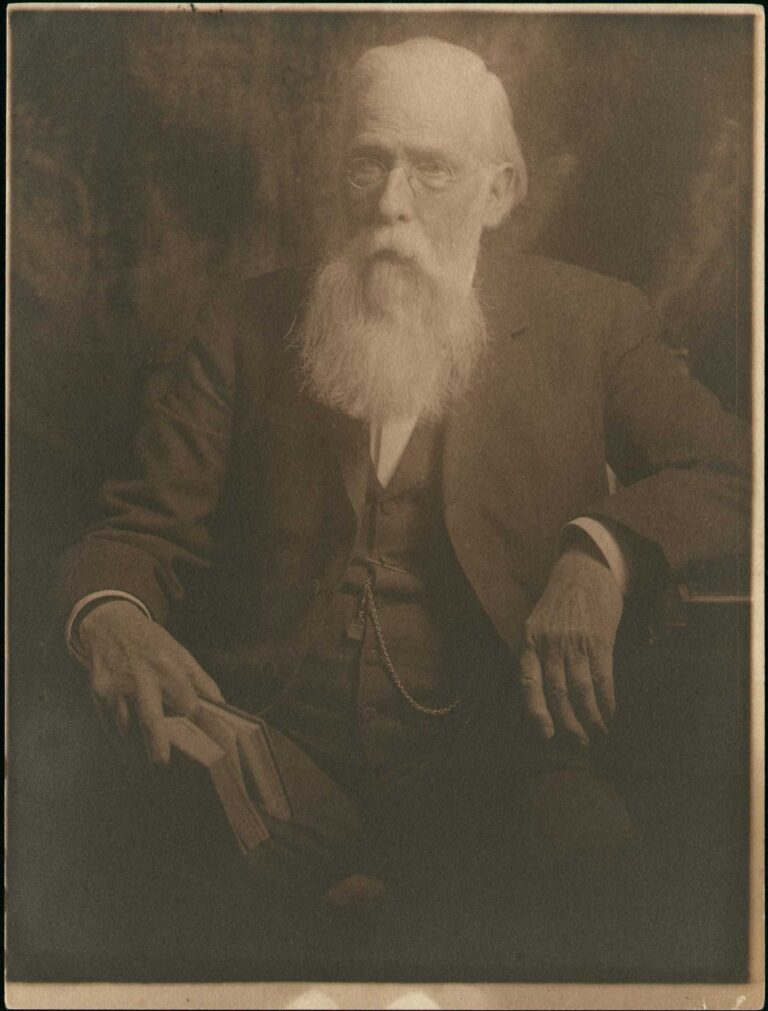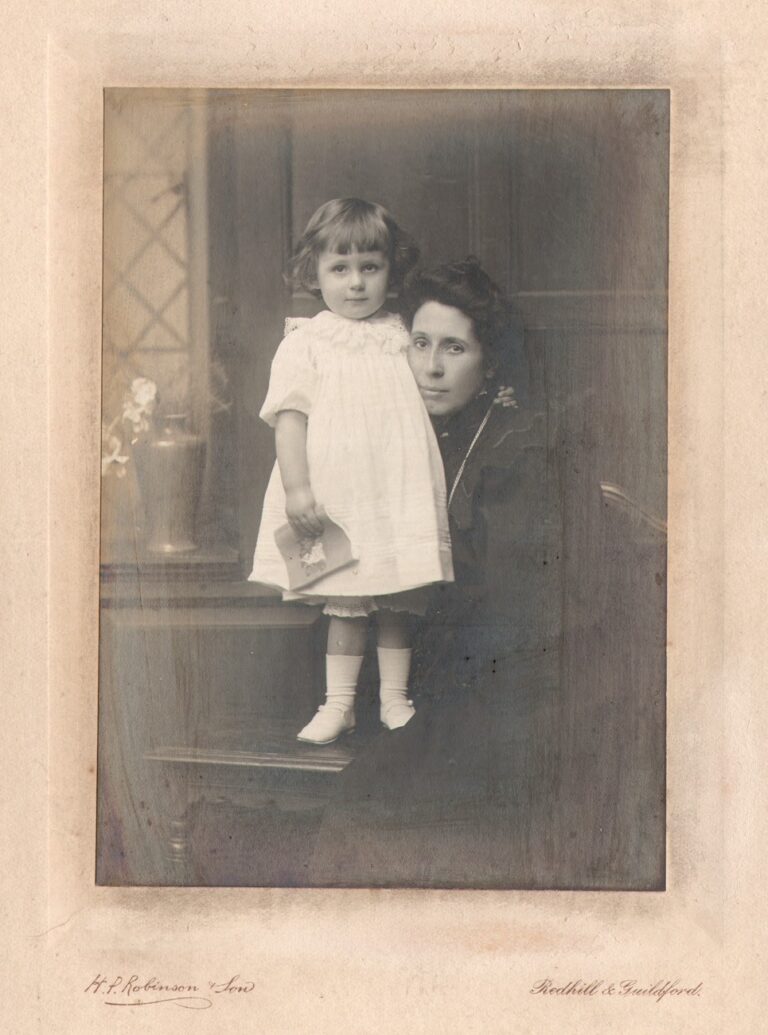
A Pleasant Walk
This photograph has been center-glued along top margin to a cream-colored support. A hand-produced indented faux-frame appears around the image, which has been titled in pencil within the lower margin “A Pleasant Walk“. The only other writing on the support is Hinsdale, which appears in the lower right corner in the margin. The verso has no writing. The photograph, printed on a rough-surface paper which may be platinum, appears to have been hand-colored, or at least toned, with the aging process making this very muted. It is also possible, based on other stylistic genre work from the period, that the photograph was taken before 1890. The Hinsdale reference may refer to the location of the photograph-possibly Hinsdale, New Hampshire, since the photograph was previously purchased from a resident in Milford, N.H. or even the first name of the well-regarded photographer Hinsdale Smith Jr. of Springfield, Massachusetts, actively working at the time this photograph was taken. Certainly there are more questions than answers posed by this intriguing photograph and we humbly welcome your input on it.
Original copy for this entry posted to Facebook on March 11, 2012:
I wish I could provide more details for the genre photograph “A Pleasant Walk” now posted within the collection-namely the photographer who took it. Photographs like this where the backside of the person is prominent within the frame are relatively rare from the early years of photography- possessing a mysterious charm that becomes inherently intriguing for the fact a “rule”- the impulsive human expectation of needing to identify the person by seeing their face- was broken. On an esoteric level, images like this become memorable in my view simply because their stance reveals to the viewer their face is not meant to be seen. As a comparison, historical precedence was set in the very early years of photographic portraiture when the Scottish team of David Octavius Hill and Robert Adamson created their timeless study of Lady Ruthven’s back around 1845, a mere six years after the medium’s permanent debut.


